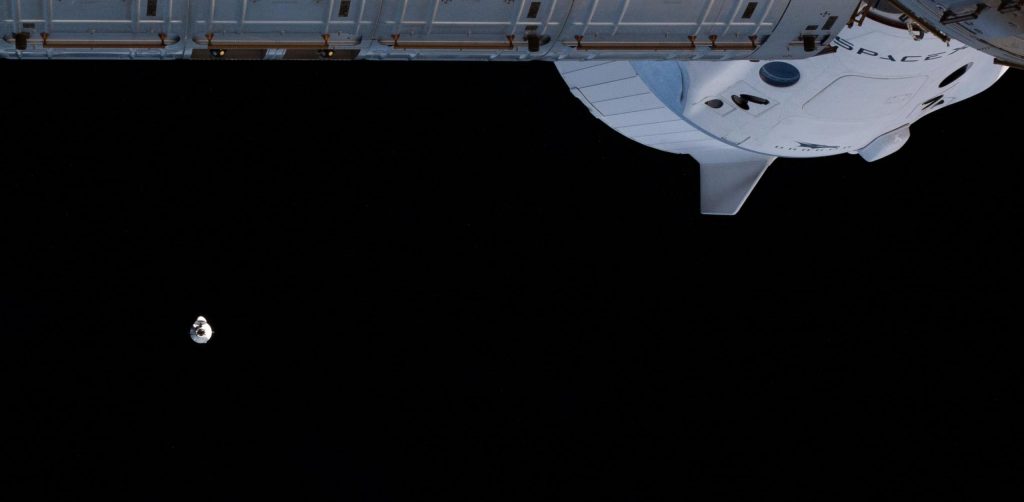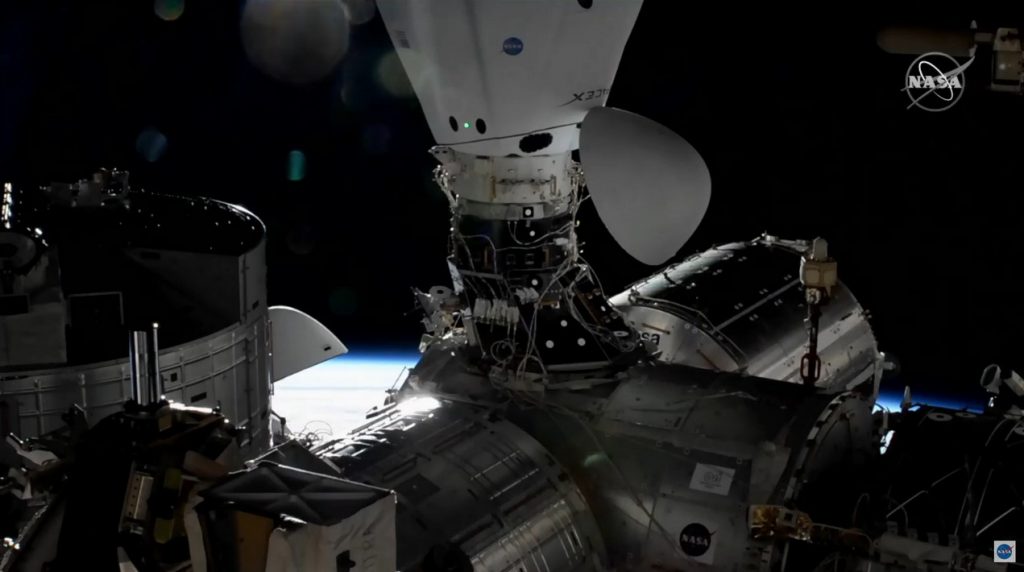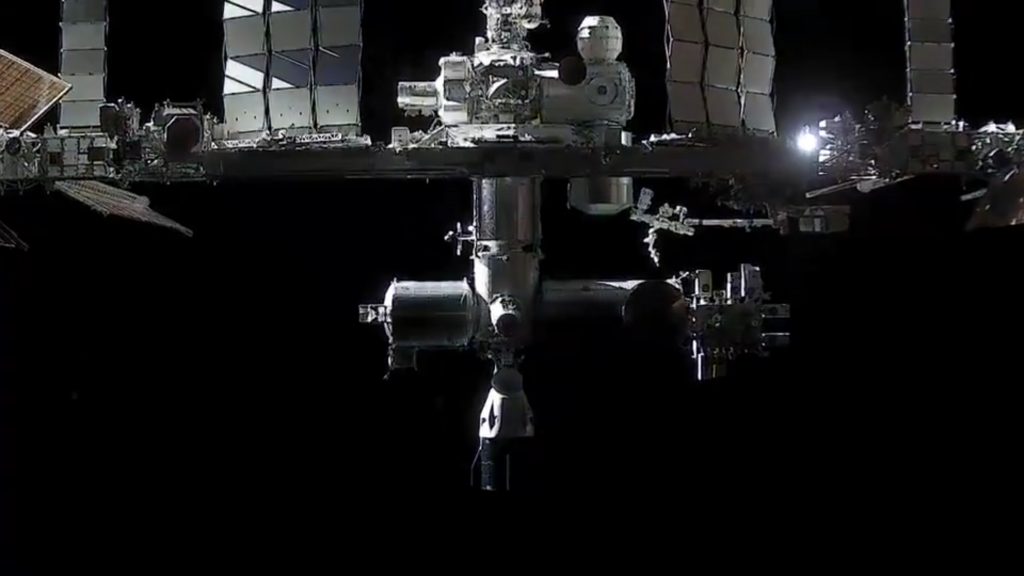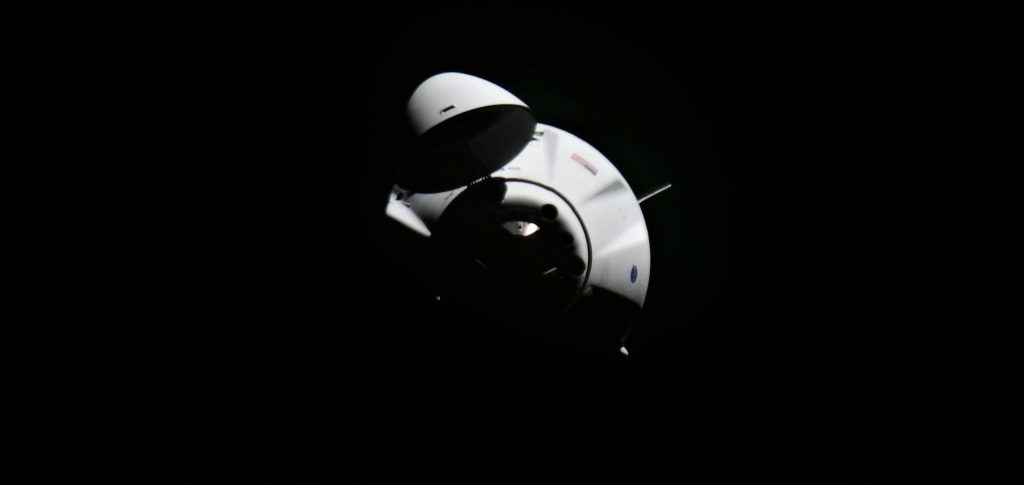For the first time, SpaceX has successfully docked two Dragons to the International Space Station (ISS) at the same time.
Carrying roughly three metric tons (~6600 lb) of cargo, SpaceX’s first upgraded Cargo Dragon aced its inaugural orbital flight and docking attempt on the first try, safely latching itself to the space station around 1:45 pm EST (UTC-5) on Monday, December 7th.
For the second time, Roscosmos cosmonaut Sergey Kud-Sverchkov thankfully managed to pick up some of the slack from the inexplicably tiny handful of NASA photos published from two historic Dragon arrivals, capturing both Crew-1 and CRS-21 in spectacular detail.
There are two Dragons on the @Space_Station at once. The #Dragon2 cargo spacecraft (an uncrewed ‘twin’ of the Crew Dragon) arrived yesterday and delivered scientific equipment, food supplies, etc.
This was the first time I watched a spacecraft dock with the ISS. Fantastic! pic.twitter.com/XrkzUYgrsG
— Sergey Kud-Sverchkov (@KudSverchkov) December 8, 2020
Sharing another portion of video of the yesterday’s @SpaceX #Dragon2 cargo spacecraft docking to the @Space_Station.
The ground velocity is tremendous: about 8 km/s, while the relative velocity of the multiton vehicle during touchdown is only 15 cm/s – it went almost unnoticed. pic.twitter.com/dqZ63qn8MX
— Sergey Kud-Sverchkov (@KudSverchkov) December 8, 2020
Admittedly, the single official photo of CRS-21 thus far published by NASA offers the first screenshot-free view of SpaceX’s Crew-1 Crew Dragon and CRS-21 Cargo Dragon in the same frame, succinctly capturing the historic milestone.


During NASA’s docking webcast, both retractable Cargo and Crew Dragon nosecones were also visible simultaneously, serving as a reminder that Cargo Dragon 2 is essentially a tweaked version of Crew Dragon. According to NASA, the space agency has officially signed contracts for at least nine Cargo Dragon 2 launches total, meaning that – barring additional contracts or an extension of the ISS lifespan – the final uncrewed Dragon flight could be CRS-29 in 2023 or 2024.
SpaceX itself uploaded a timelapse of Cargo Dragon 2’s first ISS docking taken from the spacecraft’s own camera not long after the milestone, offering some of the best live views of an ISS cargo or crew arrival in recent memory.
Ultimately, according to SpaceX officials, Crew-1 – launched on November 15th – kicked off what the company believes will be at least a year of a continuous Dragon presence on orbit, also meaning that all future Dragon launches (beginning with CRS-21) will see two Dragons simultaneously operating in orbit for at least a month or two. In the two-decade history of the International Space Station, only Russia’s national space agency has managed such a feat, serving as the sole provider of crew transport from 2011 to 2020 while simultaneously performing routine cargo launches.


In 2021 alone, SpaceX has plans for at least five – and maybe six – Dragon launches, including the first astronaut launch to use a flight-proven spacecraft and booster and the first fully private tourist mission to orbit. Combined with Starlink, the back-to-back operational debuts of Crew Dragon and Cargo Dragon 2 arguably make SpaceX the world-leader in the production and operation of satellites and reusable spacecraft.

https://ift.tt/39VAU11
Science
No comments:
Post a Comment